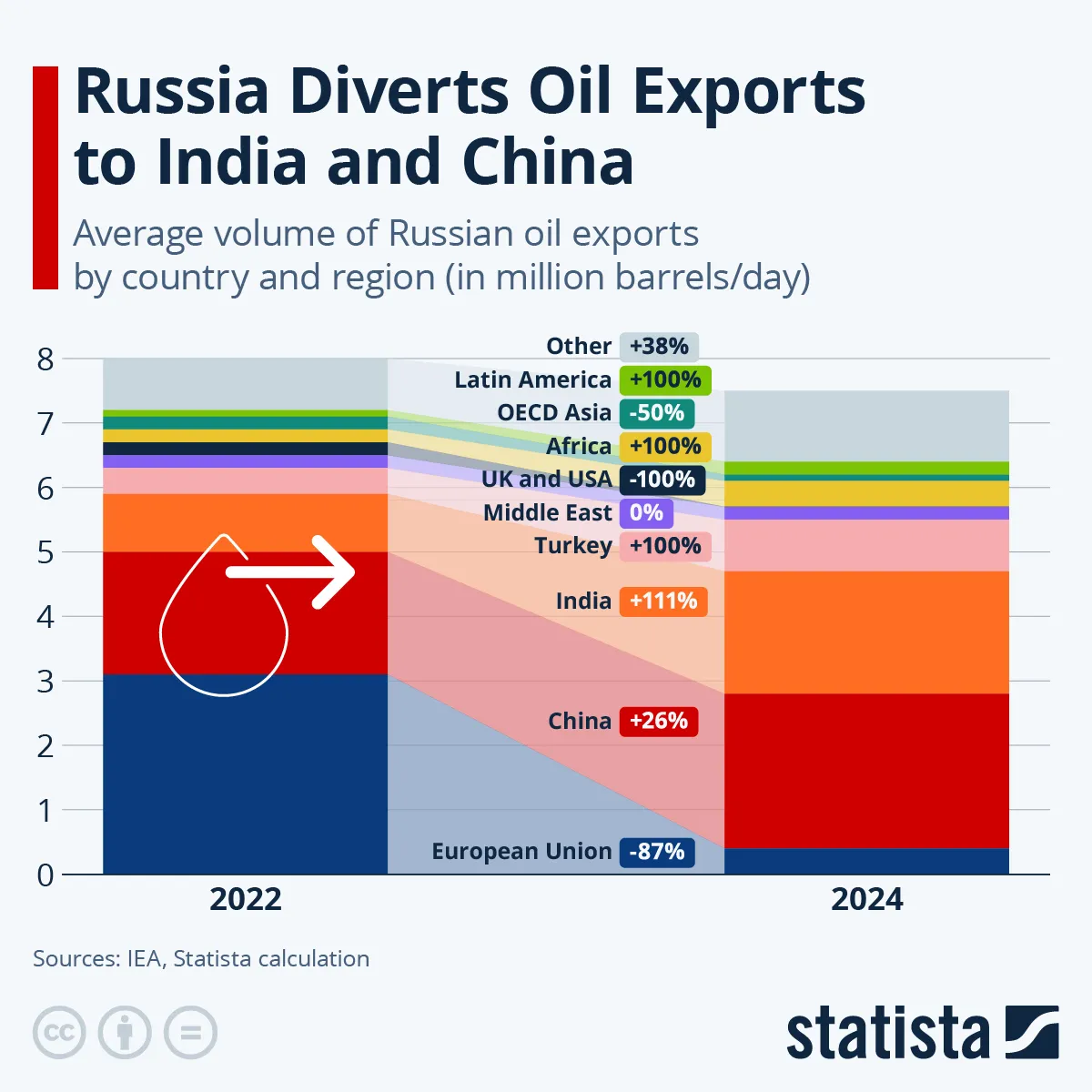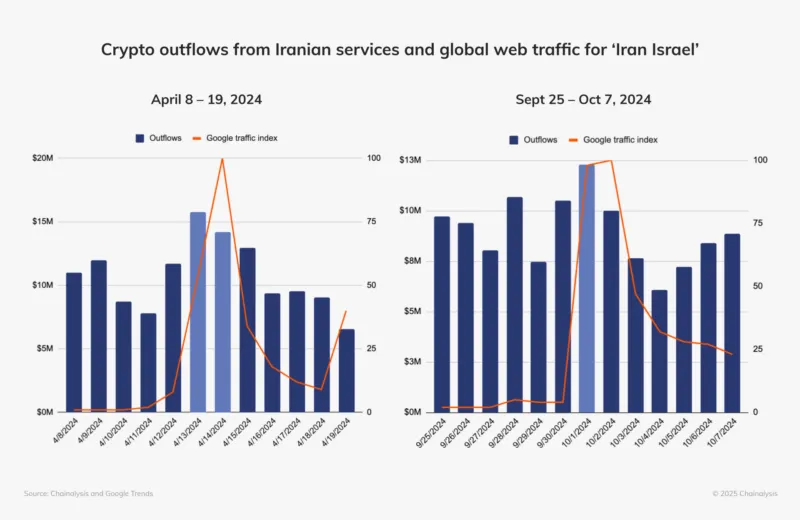Silent Flow, Huge Transformation: Stablecoins Enter the Geopolitical Trade Stage
Author: Chi Anh, Ryan Yoon
Source: Tiger Research
Translation: Baihua Blockchain

TL;DR
Russia's use of stablecoins in oil trade indicates that stablecoins are no longer marginal tools—they have become real financial infrastructure in high-risk cross-border commerce.
Despite restrictions on domestic cryptocurrencies in China and India, they benefit at the national level through stablecoin transactions with Russia, quietly experiencing the efficiency of decentralized finance.
Governments around the world are responding in different ways, but all recognize that stablecoins are reshaping the way value flows across borders.
1. The Rise of Stablecoins as Strategic Currency Under Sanctions
The global importance of stablecoins is increasing, not only as speculative tools but also as practical financial instruments—first for individuals, then for institutions, and now for entire nations.
The rise of stablecoins began in a crypto-native environment, where traders used stablecoins like USDT and USDC to trade, efficiently transfer capital, and obtain liquidity on centralized and decentralized platforms. Especially in markets with limited banking infrastructure or capital controls, stablecoins enhance access to the dollar.
Subsequently, the adoption of stablecoins expanded to institutional and B2B use cases. Companies began using stablecoins for cross-border payments, vendor settlements, and payroll, particularly in emerging markets where traditional banking services are unreliable or costly. Compared to wire transfers through SWIFT or correspondent banks, stablecoin transactions settle almost instantly, without intermediaries, and at significantly lower costs. This makes stablecoins not only efficient but increasingly indispensable for companies operating in politically or economically unstable regions.
Now, stablecoins are being tested at the national level, with their role shifting from convenience to strategy. Countries facing sanctions or seeking alternatives to the U.S.-dominated financial system, such as Russia, have turned to stablecoins.
As stablecoins transition from corporate tools to instruments of national trade, their role evolves from operational convenience to political necessity. This report will explore through real-world case studies how stablecoins are used to circumvent restrictions, reduce costs, and open new trade routes.
2. Practical Applications of Stablecoins: How Global Trade Adapts Behind the Scenes

Source: Statista
Russia is increasingly incorporating stablecoins like USDT and major cryptocurrencies like Bitcoin and Ethereum into its oil trade with China. According to a Reuters report from March 2025, this represents a strategic effort to circumvent Western sanctions.
The trading model is relatively simple. Chinese buyers transfer domestic currency (such as RMB) to intermediary institutions, which convert it into stablecoins or other digital assets. These assets are then transferred to Russian exporters, who convert the funds into rubles. By excluding Western financial intermediaries, this process reduces the risk of sanctions and enhances transaction resilience.
In these transactions, stablecoins play a particularly critical role. While Bitcoin and Ethereum are occasionally used, their price volatility makes them unsuitable for large transactions. In contrast, stablecoins like USDT offer price stability, high liquidity, and ease of transfer, qualities that support their growing role in cross-border settlements in restricted environments.
Notably, China continues to impose strict restrictions on domestic cryptocurrency use. However, in the context of energy trade with Russia, authorities seem to adopt a tolerant attitude towards stablecoin transactions. Although there is no formal endorsement, this selective tolerance reflects pragmatic priorities, especially the need to maintain commodity supply chains under geopolitical pressure.
This dual posture—regulatory caution combined with practical engagement—highlights a trend: even within officially restrictive regimes, digital assets are quietly being adopted for their operational practicality. For China, settlements based on stablecoins provide a way to bypass the traditional banking system, reduce dependence on the dollar, and ensure trade continuity.

Source: Chainalysis
Russia is not alone. Other sanctioned countries, such as Iran and Venezuela, are also turning to stablecoins to maintain international trade. These examples indicate that the use of stablecoins as tools to sustain business functions in politically restricted environments is on the rise.
Even if sanctions ease over time, stablecoin-based settlements may continue to be used. Their operational advantages—faster transaction speeds and lower costs—are significant. As price stability becomes an increasingly critical factor in cross-border trade, more countries are expected to intensify discussions on the adoption of stablecoins.
3. Global Stablecoin Momentum: Regulatory Updates and Institutional Shifts
Russia has particularly experienced the practicality of stablecoins firsthand. After the U.S. froze wallets associated with the sanctioned trading platform Garantex, Russian Treasury officials called for the development of a ruble-backed stablecoin—a domestic alternative to reduce reliance on foreign issuers and protect future transactions from external control.
In addition to Russia, several other countries are accelerating their exploration of stablecoin adoption. While Russia's primary motivation is to circumvent external sanctions, many other countries view stablecoins as tools to enhance monetary sovereignty or respond more effectively to geopolitical changes. Their appeal also lies in the potential for faster cross-border transfers and lower costs, highlighting the role of stablecoins as a driving force for modernizing financial infrastructure.
Thailand: In March 2025, the Thai SEC approved the trading of USDT and USDC.
Japan: In March 2025, SBI VC Trade partnered with Circle to launch USDC, receiving regulatory approval from the Japanese Financial Services Agency (JFSA).
Singapore: In August 2023, a regulatory framework for a single currency stablecoin (pegged to the Singapore dollar or G10 currencies) was established, allowing both banks and non-banks to issue.
Hong Kong: In December 2024, a stablecoin bill was announced, requiring issuers to obtain permission from the Hong Kong Monetary Authority; a regulatory sandbox is underway.
United States: No comprehensive legislation yet. In April 2025, the SEC stated that fully backed stablecoins like USDC and USDT do not fall under securities. In March 2025, the Senate Banking Committee passed the GENIUS Act aimed at regulating payment stablecoins. USDC and USDT continue to be widely used.
South Korea: Major domestic banks are preparing to jointly issue the first Korean won stablecoin.
These developments reveal two key trends. First, stablecoin regulation has moved beyond conceptual discussions, with governments actively shaping their legal and operational parameters. Second, geographical differentiation is forming. Countries like Japan and Singapore are pushing for the integration of regulated stablecoins, while others like Thailand are taking stricter measures to protect domestic currency control.
Despite this differentiation, there is a global recognition that stablecoins are becoming a permanent component of global financial infrastructure. Some countries view them as a challenge to sovereign currencies, while others see them as faster, more efficient tools for global trade payments. Therefore, the importance of stablecoins is rising across regulatory, institutional, and commercial domains.
4. Stablecoins Are Not a Stopgap—They Are the New Layer of Financial Infrastructure
The growing use of stablecoins in cross-border transactions reflects a fundamental shift in financial infrastructure, rather than merely an attempt to evade regulation. Even historically skeptical countries towards cryptocurrencies, such as China and India, are beginning to indirectly utilize stablecoins in strategic commodity trade, experiencing their practical utility firsthand.
This development goes beyond sanction evasion. Initial retail-level experiments have evolved into integration at institutional and even national levels, making stablecoins one of the few blockchain innovations that demonstrate real product-market fit. As a result, stablecoins are increasingly viewed as legitimate components of the modern financial system rather than tools for illicit activities.
Institutions that view stablecoins as structural elements of future financial architecture—rather than temporary solutions—may take the lead in the next wave of financial innovation. Conversely, those that delay participation may face the risk of passively adapting to standards set by others. Therefore, policymakers and financial leaders must understand the nature of stablecoins and their long-term potential, and develop strategies aligned with the evolving direction of the global financial system.
Article link: https://www.hellobtc.com/kp/du/05/5824.html
Source: https://reports.tiger-research.com/p/how-stablecoin-is-changing-global-eng
免责声明:本文章仅代表作者个人观点,不代表本平台的立场和观点。本文章仅供信息分享,不构成对任何人的任何投资建议。用户与作者之间的任何争议,与本平台无关。如网页中刊载的文章或图片涉及侵权,请提供相关的权利证明和身份证明发送邮件到support@aicoin.com,本平台相关工作人员将会进行核查。




